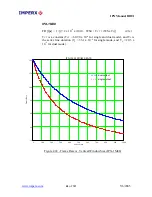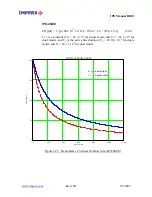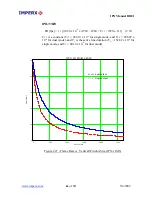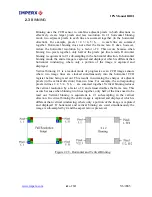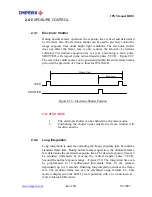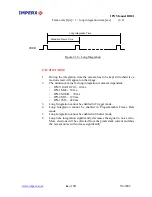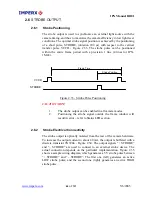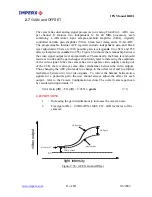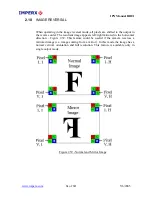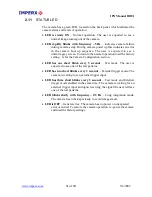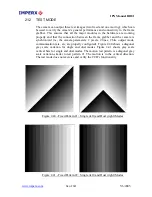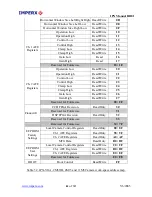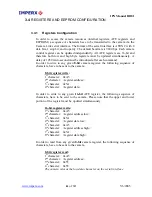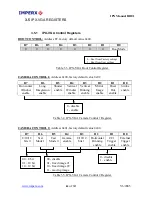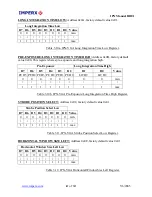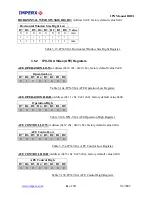
IPX Manual RB01
2.9
GAMMA CORRECTION
The image generated by the camera is normally viewed on a CRT (or LCD)
display, which does not have a linear transfer function – i.e., the display
brightness is not linearly proportional to the scene brightness (as captured by
the camera). As the object brightness is lowered, the brightness of the
display correspondingly lowers. At a certain brightness level, the scene
brightness decrease does not lead to a corresponding display brightness
decrease. The same is valid if the brightness is increased. This is because the
display has a nonlinear transfer function and a brightness dynamic range
much lower than the camera. The camera has a built-in transfer function to
compensate for this non-linearity, which is called gamma correction. If
enabled, the video signal is transformed by a non-linear function close to the
square root function (0.45 power) – formula 9.1. In the digital domain this is
a nonlinear conversion from 12-bit to 10-bit – Figure 2.38. If the camera
resolution is set to 10-bit the output resolution after gamma is 8-bit.
Output signal [V] = (input signal [V])
0.45
(9.1)
input signal resolution
output signal resolution
G = 1.0
G = 0.45
12 bit
10 bit
12 bit
input signal resolution
output signal resolution
G = 1.0
G = 0.45
10 bit
8 bit
10 bit
Figure 2.38 - Gamma Corrected Video Signal (12 bit – left, 10 bit – right)
CAUTION NOTE
1.
If this mode is enabled 12-bit the user should switch the frame grabber
resolution from 12 to 10 bits.
2.
If this mode is enabled 10-bit the user should switch the frame grabber
resolution from 10 to 8 bits.
www.imperx.com
73
of
137
5/6/2005

